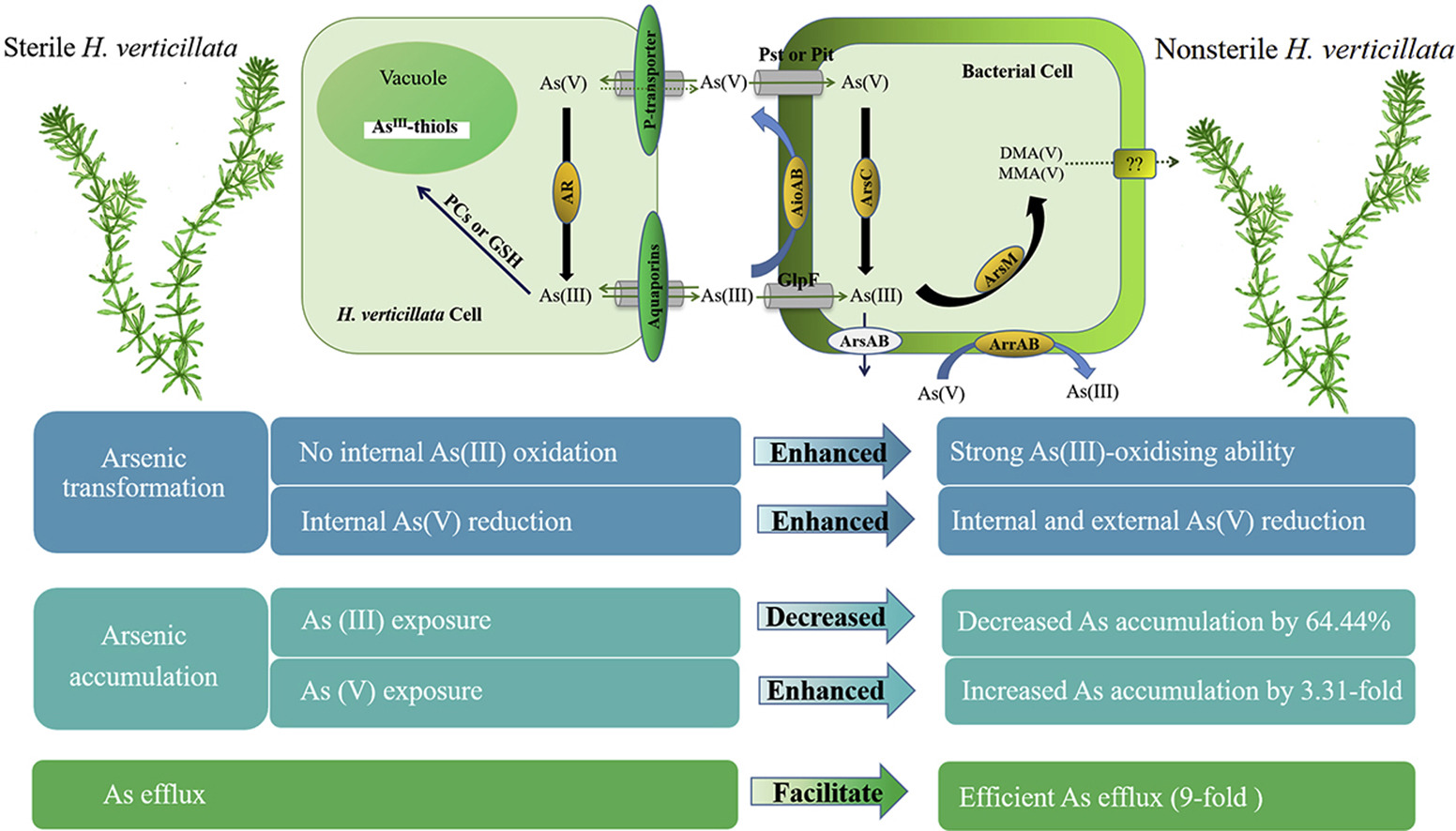Arsenic (As) is a class one, nonthreshold human carcinogen that is ubiquitous in the natural environment. Aquatic submerged macrophytes have attracted considerable attention recently for their phytoremediation potential of As contaminated waters. In addition, submerged macrophytes harbored abundant epiphytic bacteria on their leaves and stems. In contrast to plants, As metabolism by microbes is much more diverse, including As(III) oxidation, As(V) reduction, methylation/volatilization, demethylation, as well as excretion from cells. Therefore, the water purifying function of the macrophytes is most likely attributed to the role of the composite system (the plant - epiphytic bacteria system), which remains largely unknown.
Previous studies have confirmed that diverse epiphytic bacterial communities associated with the submerged aquatic macrophytes, whereas very limited information is available on the diversity of As-speciation related bacteria in these habitats. In previous studies, As uptake and metabolism was investigated by using the nonsterile plants, therefore, the capacity of As uptake and efflux by macrophytes might have been overestimated due to no consideration of the role of epiphytic bacteria. Hence, it is necessary to fully investigate the effect of epiphytic bacterial community on metabolism of inorganic As by submerged aquatic plants. The results will contribute to an overall understanding of As biogeochemistry in aquatic environments.
In this study, sterile or nonsterile H. verticillata was cultured with arsenite (As(III)) or arsenate (As(V)) under laboratory condition to investigate the impact of epiphytic bacteria on As uptake, transformation and efflux by H. verticillata. Furthermore, metagenomic approach was used to understand the diversity of As metabolism-related gene. Results showed that diverse As metabolism genes were detected, such as genes associated with As transportation (pstB, glpF, arsB, arsA, pst(S, -A and -C), and arc3), transformation (arsT, aioAB, arsC and arsM), and the relative expression levels of these As metabolic genes and corresponding enzyme activities determined As speciation, accumulation and efflux. Under As(III) stress, H. verticillata with epiphytic bacteria displayed As(III) oxidation and methylation ability, whereas sterile H. verticillata showed no similar capacities. The total As concentration in sterile H. verticillata was 35.56% of that in nonsterile H. verticillata, and small amounts of DMA and MMA were detected in nonsterile H. verticillata. Under As(V) stress, sterile H. verticillata can endogenously reduce As(V) into As(III) and excrete the latter into the medium, while nonsterile H. verticillata displayed a stronger reduction ability. The total As concentration in nonsterile H. verticillata was higher than that in sterile H. verticillata by approximately 3.31-fold. Furthermore, the presence of epiphytic bacteria also stimulated As efflux from the plants. This study revealed that highly diverse As metabolism genes were present in the epiphytic bacterial community of H. verticillata, which may have a substantial impact on As biogeochemistry in aquatic environments. The results will promote our understanding of the mechanism of As metabolism, water quality purification, and ecological restoration function of submerged aquatic plants, which may provide theoretical basis for effective phytoremediation of As-contaminated water.
The above-mentioned results have been published at Environmental Pollution (http://www.journals.elsevier.com/environmental-pollution/#description) with title of Influence of epiphytic bacteria on As metabolism in Hydrilla verticillata. PhD student ZHEN Zhuo is the first author and Professor YAN Changzhou is the corresponding author. This work is financially supported by the National Natural Science Foundation of China (Grant Nos. 21577138).

Graphical abstract